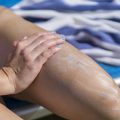1. Introduction to Ultrasound-Based Body Skin Tightening
Ultrasound-based body skin tightening has become an increasingly prominent feature within the UK aesthetics industry, representing a sophisticated advancement in non-invasive cosmetic treatments. This technology harnesses focused ultrasound energy to penetrate deep into the dermal layers, stimulating collagen production and promoting firmer, more youthful-looking skin. Unlike traditional radiofrequency or laser-based methods, ultrasound specifically targets underlying tissue structures without disrupting the skins surface, resulting in minimal downtime for patients. The British market has witnessed a notable surge in demand for these procedures, fuelled by a growing preference for non-surgical solutions that deliver visible results with enhanced safety profiles. As clinics across the UK adopt cutting-edge ultrasound devices, this method is rapidly emerging as a preferred choice among practitioners and clients alike seeking effective alternatives to surgical interventions.
2. The Science Behind Ultrasound Skin Tightening
Ultrasound-based body skin tightening is grounded in advanced medical technology, leveraging focused ultrasound energy to target the deeper layers of the skin. Unlike topical treatments, ultrasound bypasses the skin’s surface and delivers precise energy at controlled depths, typically ranging from 1.5mm to 4.5mm beneath the epidermis. This targeted approach stimulates both collagen production and elastin remodelling—two critical components responsible for maintaining skin firmness and elasticity.
Mechanism of Action: How Ultrasound Energises Skin Renewal
When high-frequency ultrasound waves penetrate the skin, they create thermal coagulation zones within the dermal and subdermal layers. This controlled micro-injury triggers a natural wound-healing response, encouraging fibroblasts to produce new collagen fibres and reorganise existing elastin structures. Over time, this results in gradual lifting, tightening, and improved skin texture without damaging the surface layer (epidermis).
Clinical Insights and Evidence
A growing body of clinical research substantiates the efficacy of ultrasound-based skin tightening. For instance, a 2018 study published in the British Journal of Dermatology examined 60 participants who underwent non-invasive ultrasound therapy for body contouring. The results showed statistically significant improvements in skin laxity and elasticity after three months, with minimal adverse effects reported.
Another noteworthy publication in the Journal of Cosmetic and Laser Therapy (2021) highlighted that more than 80% of British patients observed noticeable skin tightening following a single session, with optimal results emerging after two to three months due to ongoing collagen synthesis.
Key Mechanisms vs Outcomes Table
| Ultrasound Mechanism | Biological Response | Clinical Outcome |
|---|---|---|
| Thermal Coagulation Zones | Fibroblast activation & collagen stimulation | Smoother, firmer skin over treated areas |
| Deep Tissue Penetration (1.5-4.5mm) | Elastin fibre remodelling | Lifting effect & reduction in sagging |
| No epidermal damage | Minimal downtime & low risk profile | Quick return to daily activities—favoured by UK clientele |
This science-driven approach is key to its popularity among Britons seeking minimally invasive options for body contouring. As research continues to evolve, further refinement in device technology and treatment protocols can be expected, solidifying ultrasound as a leading solution for non-surgical skin tightening in the UK.

3. Evaluating Safety and Regulatory Standards in the UK
When considering ultrasound-based body skin tightening, safety remains a paramount concern for both practitioners and clients across Britain. The non-invasive nature of ultrasound technology offers a reassuring profile, yet it is essential to acknowledge potential side effects such as mild redness, temporary swelling, or slight discomfort following treatment. These reactions are typically transient and resolve without intervention, but their occurrence underscores the need for rigorous standards and qualified operators.
The regulatory landscape in the UK plays a crucial role in maintaining safety within the aesthetic sector. The Care Quality Commission (CQC) is central to this oversight, ensuring clinics offering ultrasound-based procedures adhere to stringent protocols regarding hygiene, practitioner training, and patient care. Additionally, bodies such as the General Medical Council (GMC) and the Health and Care Professions Council (HCPC) set professional benchmarks for those administering these treatments.
British regulations require that all medical devices used in aesthetic practices meet the UK Conformity Assessed (UKCA) mark, signifying compliance with national safety standards. Furthermore, practitioners must provide comprehensive consultations, outlining realistic expectations and candidly discussing any risks involved. This transparency fosters informed consent and builds trust between client and clinician—a cornerstone of British healthcare culture.
Ultimately, while ultrasound-based skin tightening boasts an impressive safety record in the UK, ongoing vigilance from regulatory authorities ensures that best practices are continually upheld. Consumers are encouraged to seek out CQC-registered clinics and enquire about practitioner qualifications, thereby maximising both their safety and satisfaction with these innovative treatments.
Efficacy and Expected Outcomes
Ultrasound-based body skin tightening has rapidly gained traction across the UK, with British clients keen to embrace non-invasive solutions for firmer, more youthful skin. But what can one realistically expect from these treatments? Let’s explore the efficacy, session frequency, suitability for diverse skin types, and how clients in Britain are experiencing results.
Realistic Treatment Results
Unlike surgical alternatives, ultrasound-based skin tightening works gradually by stimulating collagen production deep within the dermis. Most clients report a visible improvement in skin firmness and texture after a recommended series of sessions. However, the degree of change depends on individual factors such as age, baseline skin laxity, and lifestyle choices.
Treatment Outcomes Table
| Expected Outcome | Average Timeline | Client Satisfaction (UK Clinics) |
|---|---|---|
| Mild Tightening | 1-2 Sessions (within 2-4 weeks) | High (80%+ reported improvement) |
| Noticeable Firmness & Contour | 3-5 Sessions (over 2-3 months) | Very High (90%+ noticed lifting effect) |
| Maximum Results (maintenance phase) | 6+ Sessions + Annual Top-Ups | Sustained (requires ongoing treatment) |
Session Frequency and Treatment Protocols
The frequency of sessions is typically tailored to each client’s needs and goals. Most reputable clinics in Britain recommend an initial course of three to five treatments spaced two to four weeks apart, followed by maintenance sessions every six to twelve months. This approach allows collagen remodelling to progress naturally while delivering cumulative benefits over time.
Suitability for Different Skin Types
A key advantage of ultrasound-based technology is its versatility. Unlike laser or radiofrequency devices that may be less effective or riskier for certain complexions, ultrasound treatments are generally safe across all Fitzpatrick skin types. Whether you have fair Celtic skin or deeper tones common in multi-ethnic British communities, this method offers inclusive rejuvenation without pigment alteration.
Client Experiences Across the UK
Bespoke feedback from British clinics highlights a consistently positive experience. Clients frequently describe subtle but noticeable improvements in jawline definition, abdominal tightness, and reduction of sagging arms or thighs. Many appreciate that there is no downtime—treatments fit easily around busy UK lifestyles—and results continue to develop for up to six months post-procedure. In summary, ultrasound-based body skin tightening delivers credible enhancements when expectations are managed and protocols are followed diligently.
5. Popularity and Adoption Across Britain
Ultrasound-based body skin tightening has seen a marked rise in popularity across the UK, influenced by evolving public awareness and shifting cultural attitudes towards non-invasive aesthetics.
Trends in Public Awareness
Over recent years, there has been a significant increase in the general public’s understanding of non-surgical cosmetic procedures. The British media, beauty publications, and digital platforms have played a pivotal role in educating consumers about the science and safety behind ultrasound treatments. National campaigns focused on self-care and positive ageing have also contributed to demystifying these procedures, making them more accessible to a wider demographic.
Factors Driving Demand
The surge in demand for ultrasound-based skin tightening is closely tied to celebrity influence and the prevailing beauty standards promoted on social media. High-profile endorsements from British celebrities and influencers have normalised such treatments, fostering greater acceptance among the public. Additionally, societal attitudes in the UK are increasingly favouring subtle enhancements over drastic changes, aligning perfectly with the gradual yet noticeable results offered by ultrasound technology. The desire for minimal downtime and discreet recovery further cements its appeal, particularly among busy professionals and parents.
Regional Differences in Access and Adoption
Despite nationwide growth, access to ultrasound-based skin tightening varies across regions. Metropolitan areas like London, Manchester, and Birmingham lead adoption rates, with an abundance of clinics offering cutting-edge services to meet high demand. In contrast, rural communities may face limited availability due to fewer specialist providers and lower market penetration. Regional socio-economic disparities also play a role; higher-income urban populations tend to adopt new technologies more rapidly than those in less affluent or remote areas.
Market Response and Future Outlook
The growing appetite for non-surgical skin tightening treatments has prompted both established aesthetic clinics and emerging practitioners to expand their offerings throughout Britain. As technology continues to advance and costs potentially decrease, it is expected that access will improve across all regions. Ongoing education, transparent regulation, and continued endorsement from trusted figures will further drive adoption, reinforcing the position of ultrasound-based skin tightening as a mainstay in British cosmetic practice.
6. Comparing Ultrasound to Other Skin Tightening Methods
When it comes to non-surgical body skin tightening, British consumers are presented with several options, each with distinct characteristics and suitability. Understanding how ultrasound-based treatments compare to alternatives such as radiofrequency (RF), laser therapies, and surgical procedures is crucial for making informed choices.
Ultrasound vs Radiofrequency
Both ultrasound and RF treatments are popular non-invasive solutions available in UK clinics. Ultrasound uses focused sound waves to heat deeper layers of tissue, stimulating collagen production without damaging the surface skin. RF, on the other hand, employs electrical energy converted into heat, targeting both superficial and mid-dermal layers. Ultrasound typically offers more precision and deeper penetration, which may be preferable for those seeking subtle yet effective tightening in targeted areas. However, RF often suits individuals desiring a gentler approach or combination treatments addressing surface texture as well as laxity. In terms of comfort, both modalities are generally well-tolerated but may require multiple sessions for optimal results.
Ultrasound vs Laser
Laser skin tightening relies on light energy to heat the dermis and boost collagen regeneration. It is especially effective for improving superficial fine lines and mild laxity. Compared to ultrasound, laser technologies usually work closer to the skin’s surface and are sometimes associated with more visible redness or downtime post-procedure. Ultrasound is valued for its deeper reach and minimal recovery time, making it attractive for busy professionals or those with sensitive skin who wish to avoid extended downtime.
Ultrasound vs Surgical Procedures
Surgical interventions such as body lifts or tucks remain the gold standard for significant skin sagging. These methods deliver immediate, dramatic results but involve anaesthesia, longer recovery periods, potential scarring, and higher costs—factors that British patients weigh carefully. Ultrasound-based tightening appeals to those seeking gradual improvement without surgical risks or disruption to daily life. While not a replacement for surgery in severe cases, ultrasound offers a lower-risk alternative suitable for early intervention or maintenance.
Pros and Cons at a Glance
- Ultrasound: Non-invasive; precise; minimal downtime; suitable for most skin types; gradual natural-looking results; requires patience and multiple sessions.
- Radiofrequency: Versatile; comfortable; works well in combination therapies; limited depth compared to ultrasound.
- Laser: Good for surface issues; some downtime; may cause redness or pigmentation changes in sensitive British skin types.
- Surgery: Dramatic results; single procedure; higher risk; costlier; significant recovery time.
Patient Considerations in the UK Context
Bespoke consultations are vital across Britain’s diverse population, factoring in Fitzpatrick skin type, desired outcomes, tolerance for downtime, and lifestyle demands. NHS coverage is typically unavailable for cosmetic procedures, so private clinic reputation and practitioner expertise are paramount. Ultimately, many Britons favour minimally invasive approaches like ultrasound due to their safety profile and convenience—making them an increasingly popular choice amidst an evolving landscape of aesthetic technology.
7. Conclusion: The Future of Non-Invasive Skin Tightening in the UK
The evolution of ultrasound-based body skin tightening in Britain signals a significant shift in both aesthetic preferences and technological innovation. Over recent years, the UK market has witnessed rapid advancements in non-invasive skin tightening technologies, with ultrasound emerging as a front runner due to its safety profile, efficacy, and minimal downtime. British clinics are increasingly adopting high-frequency devices that offer precise collagen stimulation without compromising patient comfort or safety. This aligns with a broader national trend towards non-surgical treatments that deliver natural-looking results.
Patient experiences have also been overwhelmingly positive, with many Britons appreciating the convenience and subtlety of ultrasound-based procedures. Testimonials often highlight improvements in skin texture, firmness, and overall confidence, all achieved without the risks associated with surgical alternatives. Additionally, UK regulatory standards ensure that treatments are administered by qualified practitioners, further bolstering public trust and satisfaction.
Looking ahead, several trends are poised to shape the future of this sector within the UK. Firstly, ongoing research and development will likely yield even more sophisticated ultrasound devices capable of targeting deeper tissue layers with greater precision. Secondly, the integration of AI-driven diagnostics may personalise treatment plans for optimal outcomes tailored to each patient’s unique skin profile—a move already gaining traction in leading London clinics. Thirdly, there is growing consumer demand for combination therapies that blend ultrasound with other modalities such as radiofrequency or microneedling to enhance results.
Moreover, the British market is expected to see a continued emphasis on education and transparency, empowering patients to make informed choices about their skincare journeys. As public awareness grows and clinical evidence mounts, ultrasound-based body skin tightening is set to become not just a passing trend but an established mainstay in UK aesthetics. Ultimately, these innovations promise a future where non-invasive solutions deliver on both effectiveness and patient safety—hallmarks highly valued by discerning British consumers.

